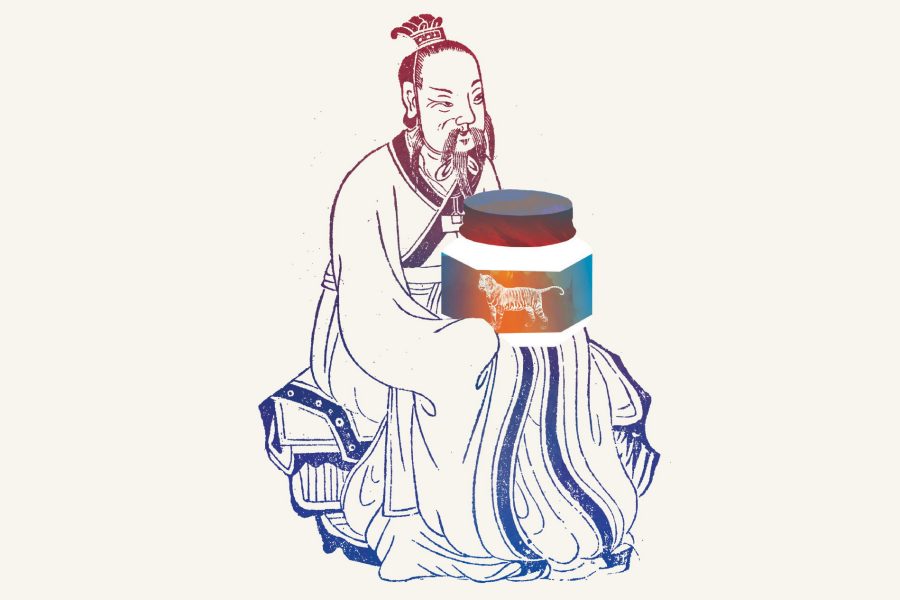In every Asian household, there’s bound to be a vial or two lying around. Chinese medicinal oil is a mainstay of the home, and there is always one brand each family regards as a universal panacea. Be it White Flower , Wood Lock or Axe , their eye-watering aroma is instantly recognisable for the intense notes of menthol. Used almost interchangeably is another set of palliatives: Tiger Balm , Po Sum On healing balm or – our family favourite – Ping On ointment, in its millennial pink container.
In the 1950s, before pharmacies were commonplace, these medicinal ointments were sold on the roadside by hawkers who conscripted a monkey as a sales assistant. While the monkey cavorted about doing tricks, the hawker related the purported benefits of these cure-all ointments to the assembled throng.
Ever since I was young, my grandmother – the most passionate advocate I know for health-imbued Chinese soups and traditional remedies – has employed her own cornucopia of oils and balms as the answer to any given ailment. Flu and a stuffy nose? Apply balm to your cupid’s bow. Stomach ache? Massage your abdomen with oil. Cough? Rub some on your chest before bed. The same goes for chronic joint pains. It is also the reason why both my mother and I always carry a small bottle of White Flower Oil when we travel, in case of any random spells of nausea, aches – or just pesky mosquito bites.
Over the years, the cultural influence of these products has extended beyond grandma’s traditional medicine and into a younger creative realm. For instance, womenswear label Mukzin , which specialises in modern designs steeped in traditional Chinese culture, recently rolled out a t-shirt emblazoned with the slogan ‘I love Tiger Oil’.
From hawkers to households to hipster threads, these oils have passed on from one generation to another, one drop at a time. So next time, rather than reaching for the aspirin, try using the Asian equivalent.
Hero illustration credit: SR Garcia
More inspiration
Hong Kong travel information
- China – the Chinese Mainland, Hong Kong SAR, Macao SAR and Taiwan Region
- Hong Kong SAR - English
- Chinese Mainland (China) - English
- Taiwan, China - English
- 香港特別行政區 - 繁體中文
- 中国內地 - 简体中文
- 中國台灣 - 繁體中文
- Africa
- South Africa - English
- Asia
- Bangladesh - English
- Korea - English
- Singapore - English
- Cambodia - English
- 한국 - 한국어
- Sri Lanka - English
- India - English
- Malaysia - English
- Thailand - English
- Indonesia - English
- Maldives - English
- ประเทศไทย - ภาษาไทย
- Indonesia - Bahasa Indonesia
- Myanmar - English
- Vietnam - English
- Japan - English
- Nepal - English
- Việt Nam - tiếng Việt
- 日本 - 日本語
- Philippines - English
- Australasia
- Australia - English
- New Zealand - English








